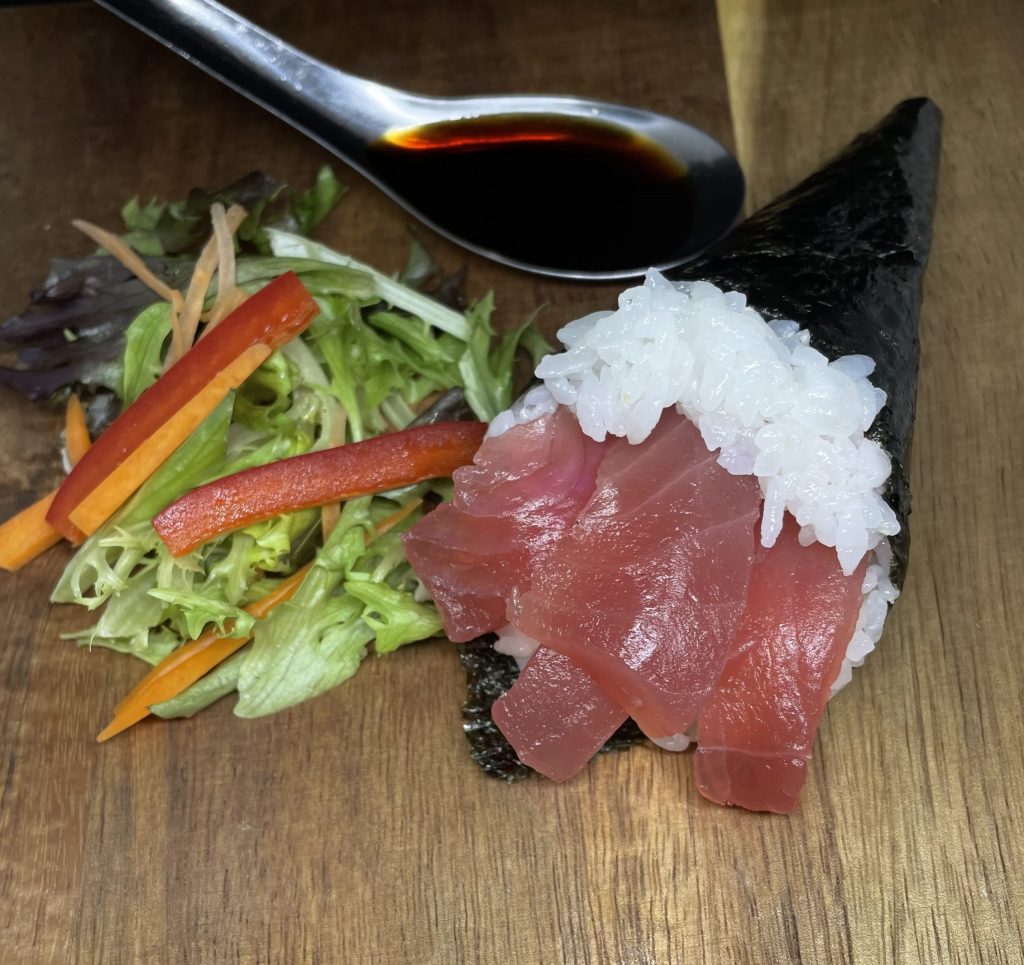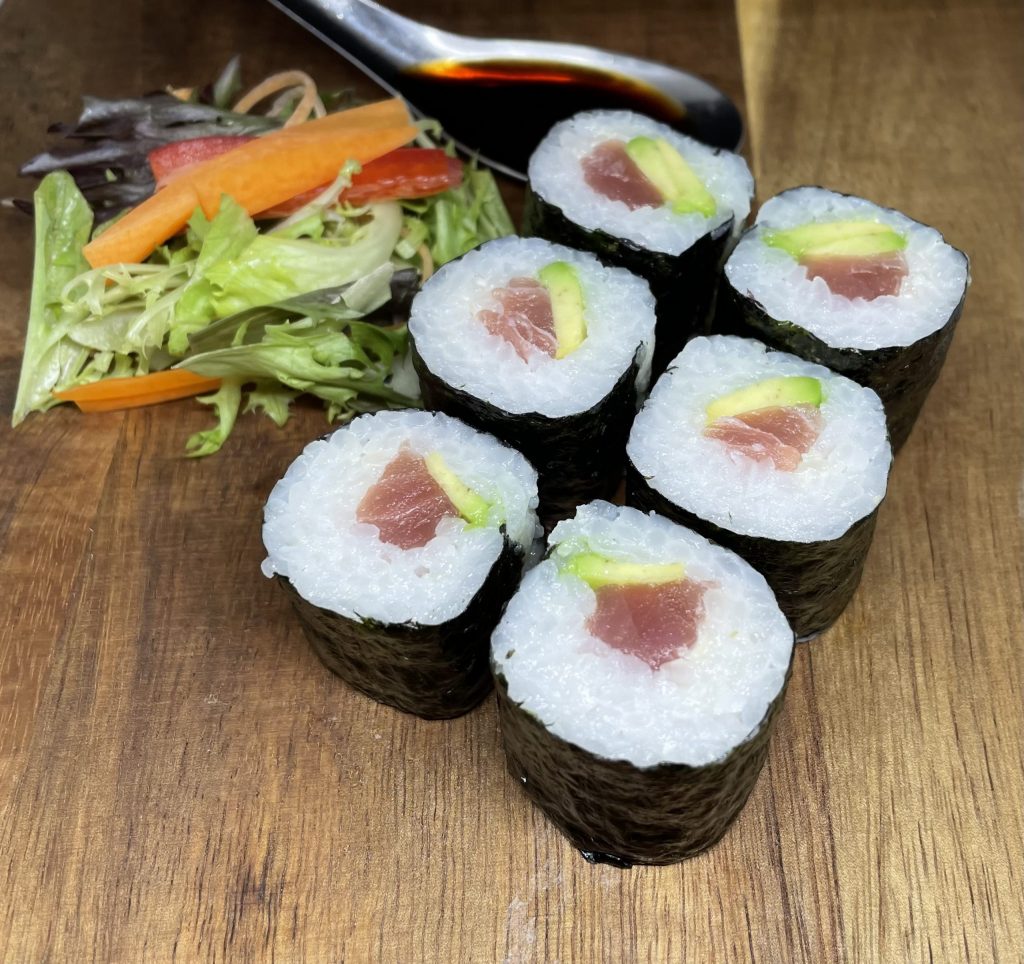A few days ago, a friend asked me which kitchen knife she should buy. She had heard that Japanese knives were really well made, so she wanted my opinion on which brand to go for. Little did she know what she was letting herself in for by asking me: before we could even begin to talk about brands, I needed to understand what she wanted the knife for. There are many to choose from because the Japanese are fastidious about knives, and so am I!
So, I thought I’d dedicate this blog post to writing an introduction to sushi and sashimi knives.
Japanese vs. Western knives
The main difference between Japanese and Western knives is the fact that a Japanese knife is single beveled: it’s only sharpened on one side. The other side often has a hollow in the back, which helps stop the food from sticking to the knife.
Japanese knives tend to be made of a high-carbon steel hybrid, rather than stainless steel. The pro of this harder steel choice is a sharper, stronger knife that needs to be sharpened less frequently. The con is a more brittle knife, which rusts easily. Because it’s so brittle, it’s important that the right knife is used for the right job, meaning that quite a few knives are needed and they need to be taken good care of.
Another difference is that Western knives tend to be designed for pushing and cutting (away from the body), whereas Japanese knives tend to be designed for pulling and cutting (towards the body).
As Japanese knives are made of harder steel than Western knives, the blades tend to be thinner. Maybe this lighter knife leads to more dexterous, delicate use… who can tell?
Types of Sushi and Sashimi Knives
As I mentioned above, there is a world of different Japanese knives: different knives for fish, meat, and vegetables, different knives for highlighting specific parts of the fish, and even different knives from different regions of Japan.
So here I will tell you a little bit about the main three, the Yanagi ba, debt, and Cuba.
Yanagi ba
Translating as ‘willow blade’, the yanagi is sometimes called shobu-bochu (sashimi knife) and is a long, thin knife used for cutting sashimi-grade raw fish. The length and sharpness of the knife means that fish can be sliced (to best highlight its texture) in one single movement with very little force. There’s no ‘sawing’ involved and very little pressure exerted on the fish, which means glossy, smooth and un-bruised slices. A quality tool for a quality ingredient!
Deba
Translating as ‘pointed carving knife’, the deba is a sharp, heavy-duty knife used for both fish and meat. Often used for gutting and descaling, in sushi preparation its use is mostly as a filleting knife: removing heads and separating the fillet ready for slicing.
Usuba
Meaning ‘thin blade’, the usuba is a vegetable knife used for fine cuts and peeling. As it’s so sharp and particularly thin, carrots, cucumber and radishes can be sliced with a reduced chance of being split. The knife is taller than the other knives I’ve talked about here, to allow room for the sushi chef’s knuckles under the handle.
Oh, go on then, one more…
Sushikiri
The sushikiri translates as ‘sushi cutter’ and is usually used to cut maki rolls without crushing the rice. As it has a curved edge, this creates a longer blade, making it perfect for cutting work that needs a longer stroke.



